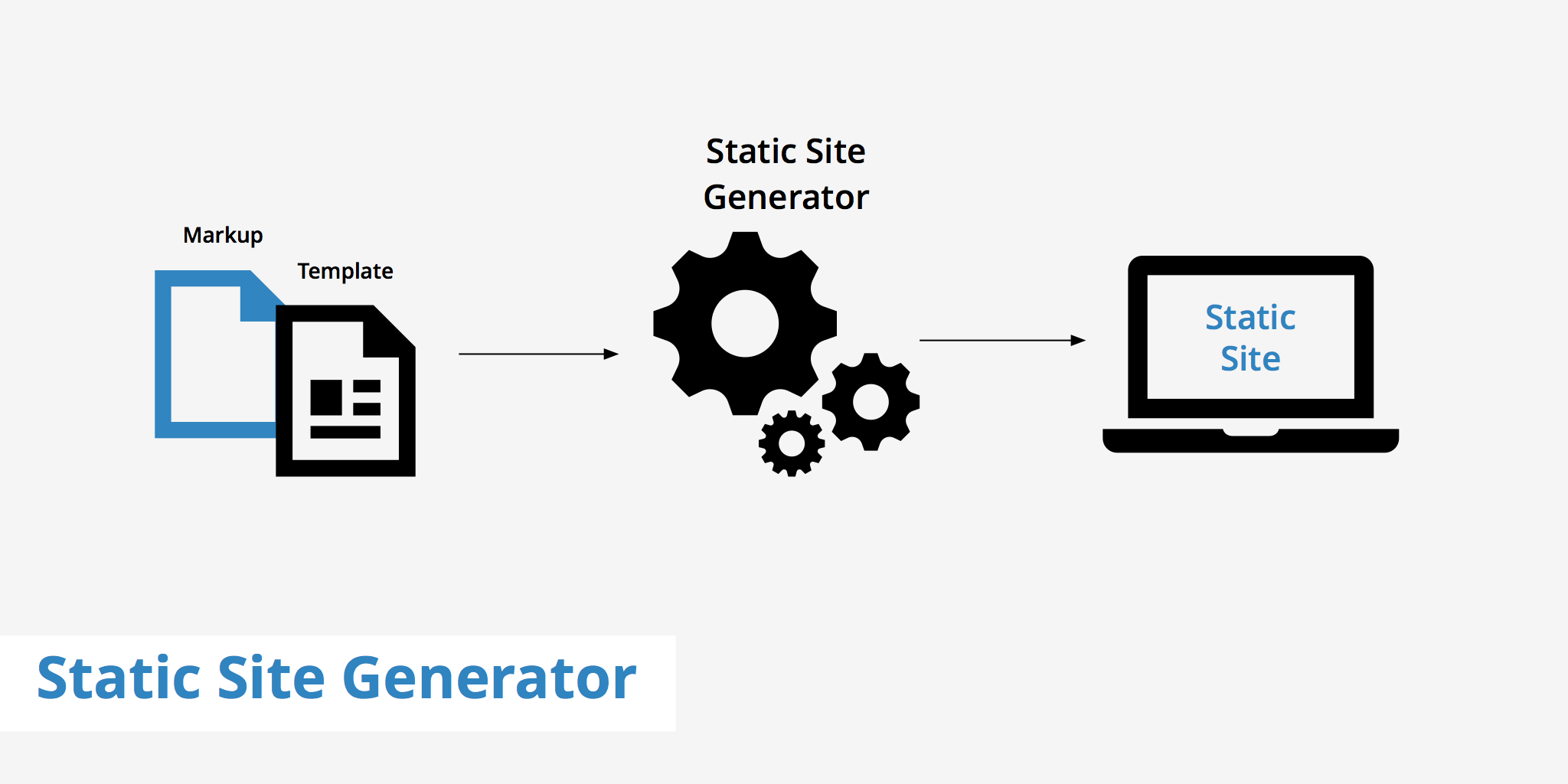What is Static Website Generation?
Static Website Generation is the process of building a website where the content is pre-built into static HTML files at build time, rather than being dynamically generated on the server each time a user requests a page. These static files are served directly to users, without needing to rely on databases or complex server-side processing.
In traditional dynamic websites, content is generated on the fly by a server. For instance, a blog post might be pulled from a database and displayed on a webpage in real time. In contrast, static websites generate HTML, CSS, and JavaScript ahead of time during the build process and serve them to the user as fully formed files.
How Static Website Generation Works
Static websites are generated through a build process, which typically involves the following steps:
- Content Creation: Developers write content (such as blog posts, product information, or documentation) in markdown files or other structured formats.
- Build Process: During the build phase, a static site generator (SSG) tool compiles these markdown files into HTML pages. The generator also adds the site’s styling, JavaScript, and other assets.
- Deployment: Once the static files are generated, they are deployed to a web server or a content delivery network (CDN), where they are served directly to users. These static files are cached, allowing them to be delivered extremely fast.
Key Features of Static Websites
- Pre-built Content: Static websites generate content ahead of time, meaning there is no waiting for a server to compile and fetch data when a user visits a page.
- No Server-Side Processing: Static websites do not require databases or back-end servers to generate content.
- Improved Performance: Since static files are already built and optimized, they can be delivered quickly and efficiently from CDNs or web servers.
Why Choose Static Website Generation?
1. Speed and Performance
Static websites are incredibly fast. Since the content is pre-built and served directly from the server or CDN, users don’t have to wait for dynamic processing. Static websites can be loaded in mere milliseconds, which results in a smoother user experience.
- No Database Lookups: With static websites, there’s no need to query a database or execute server-side scripts.
- Optimized Delivery: Static websites are often served from CDNs, which cache the content close to the user’s location, further speeding up page load times.
2. Security
https://webdevelopmentzone.com/ are more secure than dynamic websites because they don’t rely on databases or server-side code execution. With no active server processes running, there’s a smaller attack surface for malicious actors. This reduces the likelihood of attacks like SQL injections, server vulnerabilities, or data breaches.
Additionally, since static websites only serve pre-built HTML, CSS, and JavaScript files, they are much less likely to be targeted by common cyber-attacks like cross-site scripting (XSS) or cross-site request forgery (CSRF).
3. Scalability
Static websites can easily handle spikes in traffic because they don’t require server-side processing for each request. CDNs can cache static files and distribute them to users across the globe, ensuring that the website remains responsive even during high traffic.
- No Need for Server Resources: Static websites don’t require the server to process requests dynamically, meaning they can scale efficiently with minimal cost.
- Effortless Deployment: Hosting static sites can be done on various platforms such as GitHub Pages, Netlify, or AWS S3 with minimal setup.
4. Cost-Effective
Static websites are typically cheaper to host and maintain. Since they don’t require a complex back-end or database, you only need basic file storage, which can be extremely affordable. Additionally, the reduced load on servers means that hosting costs are significantly lower.
- Free Hosting Options: Platforms like GitHub Pages and Netlify offer free hosting for static websites.
- Lower Server Costs: Static sites eliminate the need for complex server-side hosting, reducing both hosting fees and server management costs.
5. SEO Benefits
Static websites offer SEO benefits due to their fast load times and clean, indexable HTML. Search engines prioritize speed and performance in their rankings, and static websites excel in both areas.
- Faster Load Times: Google and other search engines reward websites that load quickly with higher rankings.
- Clean HTML: Since static sites don’t rely on JavaScript to fetch content dynamically, search engines can easily crawl and index the content.
Popular Static Site Generators (SSG)
To build static websites, developers rely on static site generators (SSGs). These tools automate the process of converting content into static HTML files. Below are some of the most popular SSGs in the web development community:
1. Jekyll
Jekyll is one of the most popular static site generators. It’s simple, flexible, and works well with GitHub Pages, making it a top choice for developers looking to create blogs or personal websites. It uses Markdown files to create content and transforms them into static HTML pages.
Features:
- Integration with GitHub Pages for easy deployment.
- Uses Markdown for writing content.
- Supports layouts and templates for designing custom themes.
2. Hugo
Hugo is a fast and flexible static site generator written in Go. It’s known for its speed and ease of use, making it an excellent choice for building websites quickly. Hugo supports a variety of content types and includes built-in taxonomies (tags, categories) for organizing content.
Features:
- Lightning-fast build times.
- Multilingual support.
- Extensive theming options and customization.
3. Gatsby
Gatsby is a React-based static site generator that is known for its scalability and performance. It integrates with modern web technologies, making it an excellent choice for building dynamic static websites that need to pull data from external APIs or headless CMSs.
Features:
- Integrates seamlessly with React and GraphQL.
- Supports plugins for adding various features like image optimization and SEO.
- Easily integrates with headless CMSs like Contentful or Strapi.
4. Next.js
Next.js is a powerful React-based framework that can be used for both static site generation and server-side rendering (SSR). While it’s more commonly used for building dynamic web applications, Next.js can pre-render static HTML files during the build process, offering the benefits of static websites with the flexibility of React.
Features:
- Supports both static generation and server-side rendering.
- Built-in optimization for performance and SEO.
- Offers routing, code splitting, and dynamic imports out of the box.
5. Eleventy
Eleventy (also known as 11ty) is a simple static site generator that offers great flexibility. It works with various templating languages, such as HTML, Markdown, and Liquid, and allows for easy customization.
Features:
- Simple and highly customizable.
- Supports multiple templating languages.
- Lightweight and fast build process.
Best Practices for Static Website Generation
- Optimize Your Assets: Since static websites are all about speed, optimize images, JavaScript, and CSS files to minimize load times.
- Use a CDN: Hosting your static files on a Content Delivery Network (CDN) ensures that your website loads quickly for users worldwide.
- Automate Deployment: Automate your build and deployment process using CI/CD tools, so you can quickly update your website with new content.
- Use a Headless CMS: If you want to manage your content more dynamically, consider using a headless CMS like Contentful, Strapi, or Sanity with your static site generator.
Conclusion: Embrace Static Website Generation for Speed and Simplicity
Static website generation is an ideal choice for developers looking to create fast, secure, and scalable websites. Whether you’re building a personal blog, portfolio, or documentation site, static websites provide significant performance and security advantages. By using modern tools like Jekyll, Hugo, or Gatsby, you can streamline the development process while delivering a top-notch user experience.
In the world of web development, the simplicity and effectiveness of static websites are hard to beat. Embrace static website generation today, and start building the future of the web—faster, more secure, and easier to maintain.



